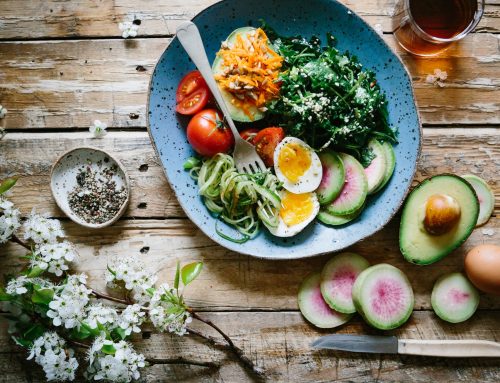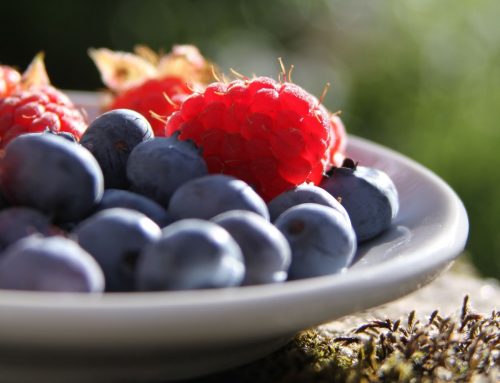The sharp flavor of onions makes them staple ingredients in classic recipes from chicken noodle soup to beef bolognese to salad nicoise. But the tang of onions isn’t the only thing that gives them superhero status. The nutritional benefits of onions are their secret superpowers. It’s time to peel back the layers on these vegetables.
What Are Onions, Exactly?
Onions grow underground as bulbs and belong to the allium family of vegetables, which also includes leeks and garlic (which has a bunch of its own health benefits, too). Yellow onions are the most commonly grown variety in the United States, but red onions and white onions are also widely available in most grocery stories. You can eat onions raw, cooked, or dried.
Onions are infamous for making people cry, and their tear-inducing effects come from enzyme reactions that trigger the release of a gas that irritates the lacrimal glands that produce tears for your eyes. Here’s why they’re worth the tears.
The Health Benefits of Onions
Diets rich in fruits and vegetables have been shown to reduce the risk for chronic diseases such as heart disease, cancer, stroke, and diabetes, said Rui Hai Liu, M.D., Ph.D., professor of food science at Cornell University. (Plus, research shows they make you happier, too.) “You should eat a wide variety of fruits and vegetables, including onions, as part of a healthy diet,” he said.
Onions contain compounds called phenolics that act as antioxidants to quench the activity of damaging free radicals, said Dr. Liu. By the way: The outermost layers of onions have the most antioxidants, according to a study published in the Journal of Food Science and Technology. (More here: These benefits of white foods prove that colorful foods aren’t the only nutrition all-stars.)
Plus, onions are inexpensive, convenient vegetables that can help you meet the recommended daily target of nine to 13 servings of fruits and vegetables—a goal that is difficult even when you’re trying really hard. “Onions are easily available and easy to store,” he said. “You can eat them raw or eat them cooked.” (Try these other healthy plant-based diet recipes for every meal of the day.)
Here are more benefits of onions you should know about:
Reduce the risk of breast cancer. In a recent study published in the journal Nutrition and Cancer, women who ate the most onions and garlic were less likely to develop breast cancer than women who ate less of the flavorful alliums. Compounds in onions such as S-allylmercaptocysteine and quercetin might stifle the spread of cancer cells.
Keep your blood sugar steady. People who eat the most onions and garlic have a decreased risk of insulin resistance, suggests research published in the Journal of Herbal Medicine. Healthy insulin function can help you control your blood sugar and stave off type 2 diabetes.
Help your skin. People who ate plenty of onions and garlic had a 20 percent reduced risk of the skin cancer melanoma in a recent study published in the journal Nutrients. (Legumes, olive oil, and eggs were also protective.)
Protect your colon. In a recent study published in the Asia Pacific Journal of Clinical Oncology, people who consumed the most alliums had 79 percent lower odds of developing colorectal cancer than those who ate the least.
Shield your heart and kidneys from damage. During a six-year study in the Journal of Hypertension, people who ate the most onions and other alliums had a 64-percent reduced risk of cardiovascular disease, a 32 percent reduced risk of chronic kidney disease, and a 26 percent reduced risk of high blood pressure.
Protect your voice. Eating onions could help you reduce your risk of head and neck cancers, suggests a study published in Molecular Nutrition and Food Research. People who ate more than three servings of onions per week had a 31 percent reduced risk of laryngeal cancer compared to those who ate less.
How to Use Onions
Depending on the type of onion, you can do a lot of creative and delicious quick and simple things with them, says Elizabeth Shaw, M.S., R.D.N., national nutrition expert and author. (Check out some healthy onion and scallion recipes right here.)
Add slices to salads. Slice red onions super thin (less than 1/8 inch) and add them to salads (like Shaw’s Cucumber Yogurt Salad or Quinoa and Spinach Salad recipes), try this Black Grape and Red Onion Focaccia Pizza, or pickle them with the directions below.
Sauté them for soups. Yellow onions are perfect for soups, chilis, and sauces, like Shaw’s Instant Pot Chicken Taco Soup. “To really get the flavor you are looking for, you’ll want to sauté them first before adding to the main recipe,” says Shaw. “Simply add a tablespoon of olive oil to your pan, toss in the onions and cook until translucent.”
Dice them. Finely dice white onions and add them to pasta salads, guacamole, and dips, suggests Shaw.
Roast or grill them. Just add a little olive oil and salt and pepper to season, says Shaw. She recommends these cooking methods before putting onions on a loaded veggie sandwich in particular.
Quick Pickled Red Onions by Erin Shaw
Ingredients
- 2 large red onions
- 2 cups white vinegar
- 1 cup sugar
- 2 teaspoons kosher salt
- 1 tablespoon peppercorns
Directions
- Slice the onions into super thin slices, 1/8-inch or less.
- Boil 2 cups of white vinegar with 1 cup sugar until dissolved.
- Remove from heat and place in a large glass jar.
- Add 2 teaspoons kosher salt, 1 tablespoon or so of peppercorns and any other seasonings you’d like, such as jalapenos.
- Top with the onions and secure the glass jar. Place in the fridge for at least 24 hours before enjoying. (P.S. here’s how to pickle any vegetable or fruit in a few easy steps.)
Source: Shape





